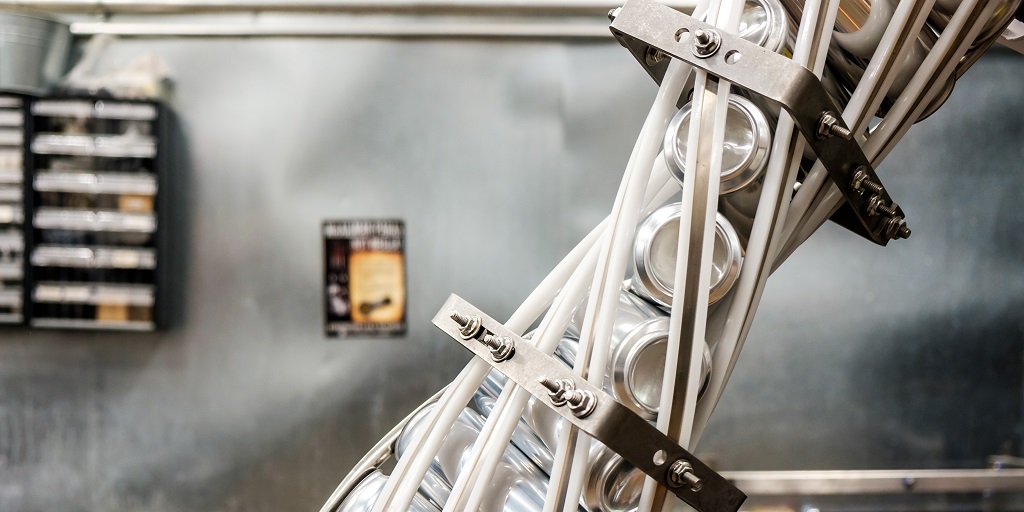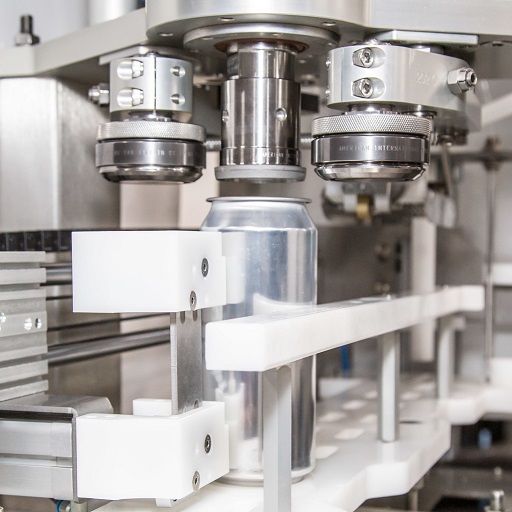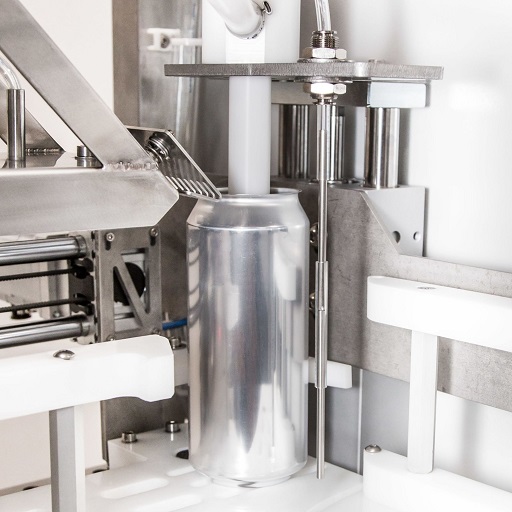
COVID increases interest in canning

As brewers move to packaged beer after venue revenues were practically erased overnight following mandatory closures, the packaging industries are under pressure to deliver.
Mobile canners across the country – and around the world – have packed-out schedules as brewers make the move from keg to can or bottle. Chris Kelly from Australia’s East Coast Canning said that the key thing for the business was getting customers and staff through the challenges posed by COVID-19 restrictions.
“We weren’t immune to the fear around the potential that at any moment your business model might have to change. We had planned for every contingency and in 48 hours we thought of as many scenarios as possible,” he told Brews News.
“Within one or two weeks we saw what was going to happen and we got busier and busier.”
Kelly explained that East Coast Canning had been building its processes for growth for some time.
“We’ve been in a solid growth phase previously so we were already looking super busy in March and April. If anything we’re doing 10 per cent more work than what we would have been doing and there’s more volume, and it’s been much more varied.”
He said that while the business had seen an uptick in work, a lot of it was from existing customers.
“We’re primarily working with our regular customers and doing a bit more work for them, but we’ve definitely seen more new customers in the past few weeks.”
Keg-to-can
One of the major issues brewers and venues have been left with is beer in keg form, which cannot be sold on-premise except as takeaways.
Some have invested in growlers, despite the efforts of some state governments to clamp down on refills, but the difficulties with growlers lie in their short shelf life and growing but still limited consumer demand for them.
As an alternative, brewers have moved to getting their kegs, which would otherwise go untapped, into cans or bottles.
“We’ve been doing a fair bit of work out of kegs,” explained Kelly.
“The problem with keg to can is that every keg can end up with a different quality standard though no fault of any brewers’ systems or processes, with different dissolved oxygen.
“The temperature of that keg, the type of filler you use, whether you get a counter pressure machine, in our opinion there’s no way to do it without massive wastage.”
He said that for large amounts of beer, moving from keg to can just isn’t a viable solution.
According to some estimates 4.5 million litres of beer from the mainstream brewers will go down the drain, although CUB has distributed growlers in an attempt to bring this total down whilst Lion Australia is reportedly emptying kegs into wastewater treatment plans.
“The beer in that keg is not overly valuable and it can be a better idea to get rid of the beer and get the excise back, it might be a superior option for the big guys despite being horrifically wasteful,” explained Kelly.
The Australian situation mirrors that in the US. David Racino, CEO at American Canning said that the mobile canning company, which also supplies cans, ends, machinery, had seen a “tremendous” amount of increased interest from breweries from the end of March, adding 250 new customers that month.
“Most every brewery that we work with here in the US has begun selling direct-to-consumer,” Racino explained.
“Without massive scale, relying solely on packaged distribution to retail is tough to do, just because the margins are relatively thin.
“With the closing of tap rooms, bars and restaurants, revenue and profitability vanished, overnight.
“The good news is that the margin is actually pretty good on packaged sales direct to consumer, but it’s obviously not going to match the volume they were previously selling,” he said.
Investing in small-scale canning lines
One alternative and a potential futureproofing exercise for breweries in the medium term is to invest in a canning system.
Smaller brewers have been put off by cost and size of canning machines, but there are smaller automated options, such as US filling machine manufacter Wild Goose Filling’s newly-launched canner the Gosling, an automated CO2 purging, filling and lid application system specifically intended for smaller beverage companies.
The company had planned to launch the Gosling at the US Craft Brewers Conference in San Antonio, but following the cancellation of CBC and the restrictions brought in as a result of COVID-19, the company brought it to market sooner, said Christina Marrick at Wild Goose.
“Everyday I have 10 to 20 calls, maybe even more, from people wanting to get their hands on canning equipment so they can get a revenue stream and get their products into peoples’ hands,” Marrick told Brews News.
The company expected 40 orders for the Gosling in the first year. They received 60 orders within the first month of its launch from brewers and beverage manufacturers as far away as India, New Zealand and Australia. They are now talking about expanding the team to keep up with orders.
But the design of the Gosling started well before the COVID-19 pandemic.
“Most breweries are sticking small, they’re not getting with big distributors and aren’t trying to go across the world,” Marrick said.
“So we thought that making a smaller system at the price of a car – which seems like a lot too, but not US$100,000 dollars like the bigger canners – it’s definitely more achievable, to help put the dream of canning into people’s hands especially if they have really small spaces.”
She said that the Gosling can also be used for keg-to-can.
“With the inner mechanics of them being so small you can hook it up to kegs and it’s not going to pour as fast as one of the larger systems, like the mobile canners have,” she said.
“They wouldn’t pour from kegs unless you have five of them daisy-chained together because you’re wanting to pull from a larger vessel. Mobile canners can do 40 cans a minute and that will empty the keg in a matter of minutes, then you’ll risk over foaming issues. With the Gosling it’s so small it’s meant to do smaller batches.
“We’ve had a lot of success canning out of kegs, we checked the DO on the last one, and it was in the single-digit parts per billion.”
With the huge demand, Wild Goose have had to rearrange the workshop, and are also putting pressure on the upstream supply chain to fulfil raw material requirements.
But Marrick said the aim was to do everything they could to reduce lead times and get canning lines to companies as soon as possible.
“Now it’s a 12-week waiting time from 8 weeks, but when you’re waiting [on something] to maybe save your business it’s a long time, so we’re trying to do everything we can to speed up the process and get these out faster,” she explained.
“It’s not just beer, it’s kombucha, ready-to-drink cocktails, all the beverage industry right now is struggling.”
Future for packaged beer
With the immediate surge in interest for canning, the question remains whether the interest in packaged beer will remain once venues reopen.
“This virus came out of nowhere and people are considering if this happens again – what if the news stories that say that it will come back in the Fall twofold are true and we can’t survive any more time being down and we need to keep our revenue stream going, investing in a piece of equipment for canning or bottling [is an option],” Marrick from Wild Goose said.
American Canning’s Racino is also positive about the move to packaging.
“I would think that forcing direct-to-consumer sales on so many industries so quickly will make this model more commonplace in perpetuity,” he told Brews News.
“The toothpaste is out of the tube now, so to speak. I would find it hard to imagine that the brewing world will snap right back to what it was before and we fully expect small-scale canning to continue for most of the breweries that have started it—at least in some capacity.”
Chris Kelly of Australia’s East Coast Canning said that the downtime as a result of the COVID-19 closures may have provided a good opportunity for small brewery owners.
“They don’t usually have much breathing space, so the desire to get some product into packaging is there, but not always the time and breathing space to do it,” he said.
“We got a broad team and can provide a lot of assistance to get it over the line.”
Longer term, Kelly said he doesn’t expect the interest in canning to die down to any great degree.
“Once you open up a revenue stream and increase that revenue stream you’ve done a big chunk of the hard work, I don’t think people will allow or be satisfied to see those volumes decrease on the back of the situation we’re in.”
He also has more positive outlooks for the brewing industry after it has been forced to diversify.
“I’ve enjoyed seeing a lot of direct selling, it’s really important, there’s a lot of trade that’s looked after brewers and there’s a lot that haven’t and they wrecked it for everyone else.
“But I feel like online stores and sales are going to create health for brewers which will be great.
“It gives them that opportunity to upsell and cross-sell and for the beer-buying public who can access the entire range of the stock at that time, that’s a big plus.
“What we will see on the other side of that is a whole lot of healthy independent beer because of this.
“At the end of the day it will mean health for everyone, and healthy brewers means healthy venues and consumers and suppliers.”





